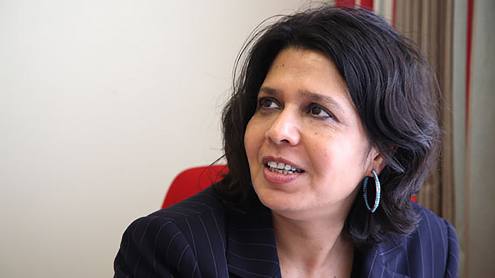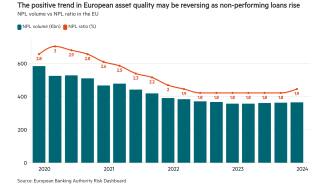The European Banking Authority’s (EBA) apparent support for raising the minimum capital adequacy ratio for European banks to 9% is possibly the wrong solution, and certainly made at the wrong time.
Editor's choice
The wrong solution, because the scale of asset quality problems across Europe varies widely, and nobody (including the EBA) knows for sure which banks will need more capital, or how much. This is why banks refuse to lend to each other – forcing central banks to provide increased liquidity to the system. And the impression was reinforced by the emergency at Franco-Belgian lender Dexia in October, which had passed the EBA’s own stress-test in July 2011 by a reasonable margin.
There is consensus that Greece will restructure its sovereign debts beyond the 21% haircut proposed in July 2011. But there is no clear idea of how far, or what the knock-on effects might look like. The third-quarter loss of almost €1bn at Austria’s Erste Group, which had been considered relatively shielded from eurozone woes thanks to its eastern European focus, could be a clue. Alongside a hit of €280m for its credit default swap portfolio, there were also goodwill write-offs for individual country subsidiaries as Erste downgraded its growth expectations.
As a traditional savings bank, Erste adheres to high standards of risk reporting, and it is possible that other eurozone banks have so far been less candid. That gives an idea of the scale of damage that may follow a Greek restructuring, especially for some banks in France and the eurozone periphery that have not marked sovereign exposures to market.
But since the losses are hard to quantify, the 9% capital target is arbitrary. And the timing of the proposed recapitalisation is atrocious.
Markets will not absorb hundreds of billions of euros in new capital raisings any time soon. Nor can governments, given that their overstretch caused the current crisis in the first place. The Bank of England’s newly established Financial Policy Committee argued in September that banks should raise capital if the opportunity presents itself, but should also allow capital ratios to run down if necessary, rather than stifling economic recovery. This is precisely what a capital cushion is for – to absorb losses in the bad times, before being rebuilt in the good times.
A far more likely way to bring back the good times, as one UK fund manager argues, is some sort of asset protection or bad bank scheme for the EU. This would make it possible to cap bank losses and restore confidence in the bank funding markets. A guarantee-based scheme would also avoid governments putting in vast amounts of capital up front.











